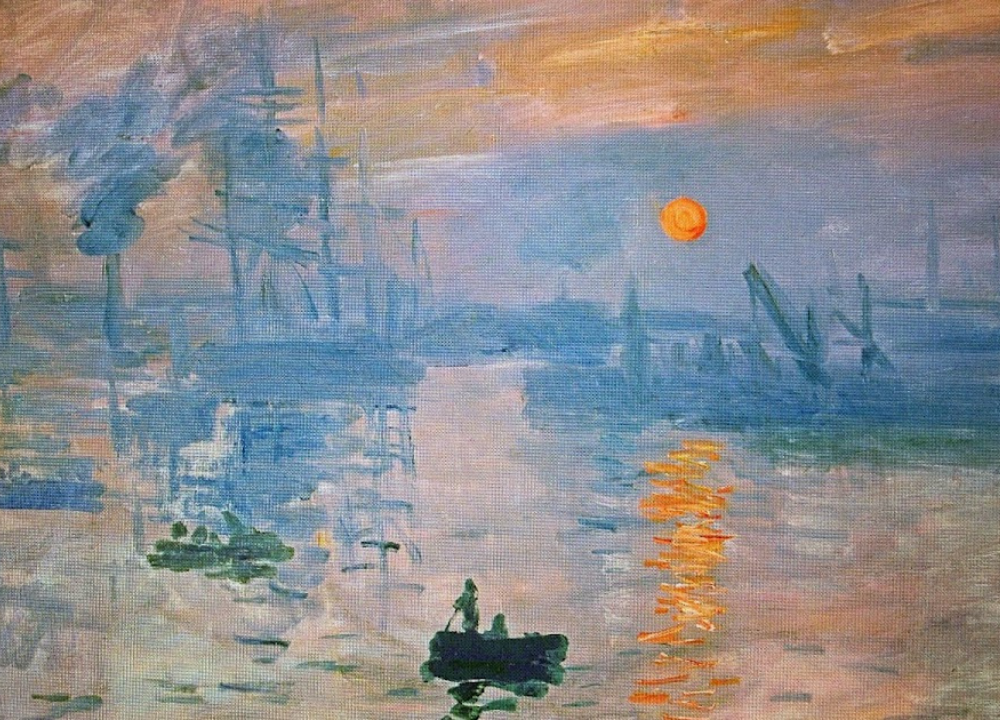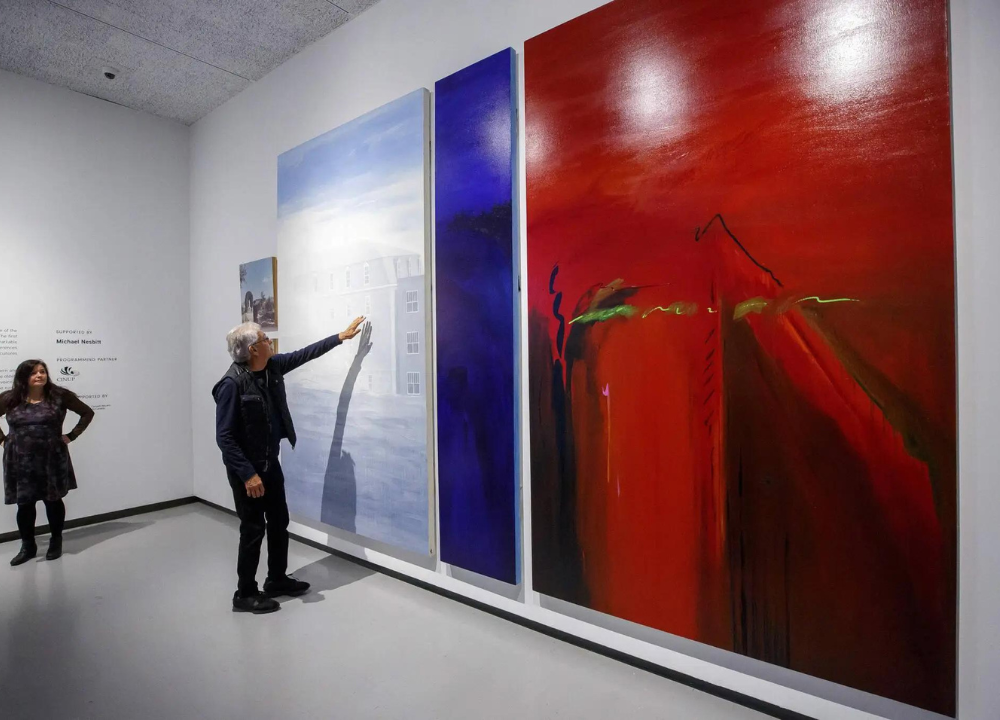A good art exhibition creates a memorable experience. It draws visitors in and leaves a lasting impression.
Art exhibitions are more than just a display of pieces; they tell a story. The success of an exhibition lies in several key elements. These elements guide curators in designing shows that engage and inspire. From the selection of artwork to the layout and lighting, each detail plays a role.
Visitors want to feel connected to the art and the message behind it. An effective exhibition encourages exploration and conversation. Understanding what makes an exhibition successful helps artists and organizers create impactful experiences. Let’s explore the essential elements that contribute to a successful art exhibition.
Visual Appeal
Visual appeal is a crucial part of any art exhibition. It draws visitors in and creates a memorable experience. The way art is presented can enhance its beauty and meaning. A well-designed exhibition captivates the audience and encourages them to engage with the artwork. Elements like color schemes and lighting techniques play a key role in achieving this visual harmony.
Color Schemes
Color schemes are essential in creating a cohesive look in an exhibition. They help to set the mood and convey emotions. Choosing the right colors can make a significant difference in how the artwork is perceived. Here are some points to consider:
- Complementary Colors: Use colors that enhance each other. This makes art stand out.
- Monochromatic Schemes: Stick to one color in different shades. This creates a calm, unified feel.
- Contrasting Colors: Use colors that clash for a vibrant, energetic vibe. This can draw attention to specific pieces.
Creating a balanced color palette is key. A table can help visualize different schemes:
| Color Scheme | Effect |
|---|---|
| Complementary | Enhances visibility and focus |
| Monochromatic | Creates harmony and tranquility |
| Contrasting | Generates excitement and energy |
Choosing the right color scheme can influence how visitors feel. A well-thought-out palette helps create a memorable experience.
Lighting Techniques
Lighting is another vital aspect of visual appeal. It can dramatically change how artwork is seen. Proper lighting enhances colors and shapes. It also sets the overall mood of the exhibition. Consider these lighting techniques:
- Spotlighting: Use focused lights on key pieces. This draws attention and highlights details.
- Ambient Lighting: Create a soft glow throughout the space. This provides a comfortable viewing atmosphere.
- Accent Lighting: Add lights to emphasize textures and colors. This adds depth to the artwork.
Different lighting setups can affect the viewer’s experience. Here’s a simple comparison:
| Lighting Type | Purpose |
|---|---|
| Spotlighting | Highlights specific artworks |
| Ambient | Creates a welcoming space |
| Accent | Adds interest and depth |
Effective lighting can transform an exhibition. It enhances the overall visual experience. Properly lit art invites viewers to explore.
Curatorial Vision
Curatorial vision is the backbone of any successful art exhibition. It shapes the experience for visitors and gives the exhibition its unique identity. A strong curatorial vision pulls together different elements, creating a cohesive and engaging atmosphere. This vision starts with clear ideas and concepts that guide the selection of art, artists, and the overall presentation. Curators must balance creativity with organization to ensure the exhibition resonates with its audience. The two main aspects of a curatorial vision are theme selection and artist representation.
Theme Selection
Choosing the right theme is crucial for an art exhibition. A theme provides focus and direction. It helps in connecting various artworks and creating a narrative. A well-chosen theme invites visitors to explore and reflect on the subject matter. Here are some important points for effective theme selection:
- Relevance: The theme should relate to current events, cultural discussions, or social issues.
- Clarity: A clear theme helps visitors understand the exhibition’s purpose.
- Engagement: Themes that evoke emotions or provoke thoughts are more engaging.
Consider a few common themes used in art exhibitions:
| Theme | Description |
|---|---|
| Identity | Explores personal and cultural identity. |
| Nature | Focuses on the relationship between humans and nature. |
| Technology | Examines the impact of technology on society and art. |
A strong theme sets the tone for the exhibition. It guides the curator in selecting artworks that complement each other. This connection enhances the visitor’s experience and understanding.
Artist Representation
Artist representation is another key element of curatorial vision. It involves selecting artists whose work aligns with the exhibition theme. The diversity of artists can enrich the exhibition. Here are some factors to consider:
- Variety: Include artists from different backgrounds and styles.
- Emerging vs. Established: Balance between new voices and recognized artists.
- Local vs. International: Highlight local talent while also featuring global artists.
Effective artist representation can be broken down into steps:
- Research artists whose work fits the theme.
- Evaluate their past exhibitions and styles.
- Contact artists and discuss their interest in participating.
By choosing a diverse group of artists, the exhibition can appeal to a wider audience. This strategy creates a dynamic dialogue among the artworks. Visitors gain new perspectives and insights through varied artistic expressions.

Audience Engagement
A good art exhibition goes beyond displaying artwork. Audience engagement is key for success. Engaged visitors connect with the art. They remember the experience. This connection can inspire creativity and appreciation for the arts. Engagement can come in many forms, including interactive elements and guided tours. These methods make exhibitions lively and memorable.
Interactive Elements
Interactive elements make art exhibitions exciting and dynamic. They invite visitors to participate actively. Instead of just looking at art, people can touch, create, or share their thoughts. This participation increases interest and enjoyment. Here are some common interactive elements:
- Hands-on Activities: Allow visitors to create art themselves.
- Digital Installations: Use screens or tablets for deeper engagement.
- Feedback Walls: Let visitors leave comments or drawings.
- Augmented Reality: Enhance the experience through technology.
Interactive elements can also be organized into a table for better clarity:
| Type | Description |
|---|---|
| Hands-on Activities | Visitors create their own pieces of art. |
| Digital Installations | Interactive screens with art-related content. |
| Feedback Walls | A space for comments and visitor art. |
| Augmented Reality | Technology enhances the visual experience. |
These elements make art more accessible. They encourage creativity and foster a sense of community among visitors. Engaging experiences can make a lasting impact.
Guided Tours
Guided tours offer structured experiences for visitors. They provide insights into the art and artists. A knowledgeable guide can share stories and background information. This context enriches the viewing experience. Guided tours can take many forms:
- Live Tours: A guide leads a group through the exhibition.
- Audio Guides: Visitors listen to recorded information on their own.
- Workshops: Combine a tour with hands-on learning.
Benefits of guided tours include:
- Enhance understanding of the artwork.
- Encourage questions and discussions.
- Create a sense of connection among participants.
Guided tours can be tailored for different audiences. Schools, families, and art lovers all benefit from customized experiences. These tours help visitors appreciate art on a deeper level.
Space Utilization
Space utilization is a vital part of any successful art exhibition. It involves how the physical area is used to enhance visitor experience. The way space is arranged can affect how people interact with the art. A well-planned exhibition draws attention to the artwork while ensuring comfort and engagement. Key elements include layout design and flow of movement.
Layout Design
Layout design is the blueprint for an art exhibition. It determines how artworks are presented and where visitors will move. A good layout creates a visual path that guides visitors through the space. Here are some important factors in layout design:
- Grouping Artworks: Similar pieces can be grouped together. This helps visitors connect themes and styles.
- Spacing: Each artwork needs enough space. This prevents crowding and allows for better viewing.
- Accessibility: All areas must be easy to reach. This includes wide pathways for wheelchairs or strollers.
Consider using a table to outline different layout styles:
| Layout Style | Description |
|---|---|
| Grid | Organizes artworks in straight lines. Easy to navigate. |
| Open Concept | Allows free movement. Creates a relaxed atmosphere. |
| Gallery Style | Follows traditional gallery setup. Focuses on individual pieces. |
Effective layout design maximizes the impact of each artwork. It encourages visitors to spend more time exploring the exhibition.
Flow Of Movement
The flow of movement is crucial in guiding visitors through the exhibition. It ensures that people can easily navigate from one piece to another. A well-planned flow keeps the audience engaged and prevents bottlenecks. Here are key points to consider:
- Pathways: Clear pathways direct movement. They should be logical and intuitive.
- Signage: Signs help guide visitors. They should be easy to read and placed at eye level.
- Seating Areas: Provide places to rest. This encourages visitors to take their time.
Effective flow can be enhanced by:
- Using barriers or ropes to control movement.
- Creating focal points that draw visitors in.
- Designing spaces that encourage discussion and interaction.
A smooth flow of movement enriches the visitor experience. It allows them to enjoy the exhibition without feeling rushed or lost.
Marketing Strategies
Marketing strategies play a vital role in the success of an art exhibition. They help attract visitors and create buzz around the event. A well-planned marketing approach can make an exhibition memorable. It can draw in diverse audiences and enhance overall engagement. Here, we will explore two key strategies: social media promotion and community outreach.
Social Media Promotion
Social media has become essential for promoting art exhibitions. It allows galleries and artists to reach a larger audience quickly. Effective social media strategies include:
- Creating engaging content: High-quality images and videos of the artwork attract attention.
- Using stories and reels: Short, captivating clips can highlight the exhibition’s best pieces.
- Collaborating with influencers: Partner with art influencers to expand reach.
- Hashtag campaigns: Use specific hashtags to increase visibility.
Here is a simple table showing popular social media platforms and their advantages for art promotion:
| Platform | Advantages |
|---|---|
| Visual focus, strong engagement, ideal for images and stories | |
| Large audience, event creation, community groups | |
| Real-time updates, easy sharing, trending topics | |
| Visual discovery, long-lasting content, art inspiration |
Social media marketing builds excitement for the exhibition. It connects artists with potential visitors. Regular updates keep the audience engaged and informed.
Community Outreach
Community outreach is another powerful strategy for art exhibitions. It builds local support and encourages attendance. Engaging with the community fosters relationships. Here are some effective outreach methods:
- Partnering with local businesses: Collaborate with shops or cafes to promote the exhibition.
- Hosting workshops: Offer art workshops to engage the community and draw interest.
- School programs: Involve local schools for student visits and educational programs.
- Free admission days: Provide free entry on certain days to attract more visitors.
Consider these community outreach benefits:
| Benefit | Description |
|---|---|
| Increased attendance | More people visit when they feel connected to the event |
| Stronger relationships | Build lasting connections with community members |
| Positive reputation | Show commitment to the local art scene |
Community outreach efforts enhance the exhibition’s impact. They invite diverse audiences and create shared experiences. Engaging the community leads to a richer art environment.
Educational Programs
A successful art exhibition does more than display beautiful works. It engages visitors and offers them a chance to learn. Educational programs are essential elements of a good exhibition. They provide opportunities for deeper understanding and connection with art. These programs can include workshops and lectures, both of which enrich the visitor experience.
Workshops
Workshops are interactive sessions that let attendees create art themselves. They encourage participation and foster creativity. Here are key features of effective workshops:
- Hands-On Learning: Participants learn by doing. This approach makes art more accessible.
- Expert Guidance: Artists or educators lead workshops. Their expertise inspires and motivates participants.
- Variety of Mediums: Workshops can cover painting, sculpture, or digital art. This variety attracts different interests.
- Community Building: Attendees often bond over shared experiences. This strengthens community ties around art.
Workshops can be structured in various formats. Here’s a simple table to illustrate:
| Workshop Type | Duration | Skill Level |
|---|---|---|
| Painting Basics | 2 hours | Beginner |
| Advanced Sculpture | 3 hours | Intermediate |
| Digital Art Techniques | 1.5 hours | All Levels |
These workshops enhance the exhibition’s appeal. They provide visitors with practical skills and memorable experiences.
Lectures
Lectures offer informative talks from artists, curators, or art historians. These sessions deepen understanding of the artworks on display. They can cover various topics, such as:
- Art History: Insights into historical movements and styles.
- Artist Insights: Personal stories from artists about their work.
- Cultural Context: Explanation of the cultural significance of certain pieces.
Engaging lectures often include:
- Visual Aids: Slideshows or video presentations enhance understanding.
- Q&A Sessions: Attendees can ask questions. This interaction makes lectures lively.
- Networking Opportunities: Lectures bring together art lovers. This can lead to new connections.
Here’s a sample schedule for a lecture series:
| Date | Topic | Speaker |
|---|---|---|
| March 1 | The Evolution of Modern Art | Dr. Jane Smith |
| March 8 | Understanding Color in Art | Artist John Doe |
| March 15 | Cultural Influences on Contemporary Art | Curator Emily White |
Lectures provide valuable knowledge. They make art more meaningful and accessible to everyone.
Conclusion
A successful art exhibition combines many key elements. Strong themes connect the pieces. Engaging spaces draw in visitors. Good lighting enhances the artwork. Thoughtful curation tells a story. Events and activities keep the audience involved. Effective marketing spreads the word.
These aspects create memorable experiences. They make visitors eager to return. Focus on these elements for your next exhibition. Success follows when you pay attention to details. Art has the power to inspire and connect. Make every exhibition count.




